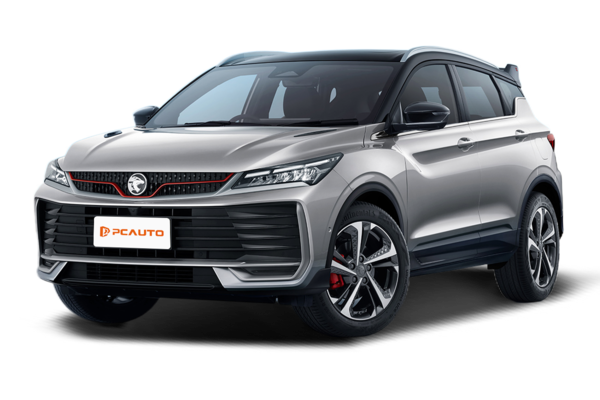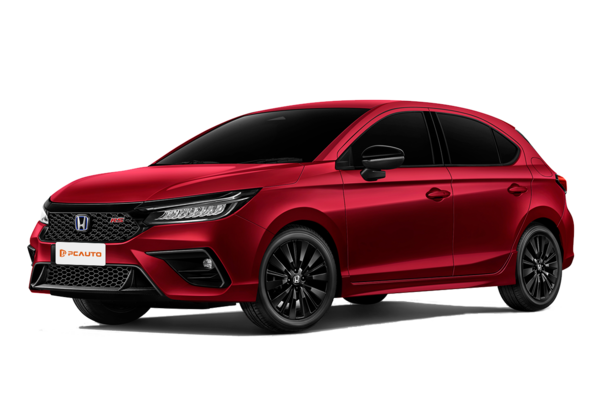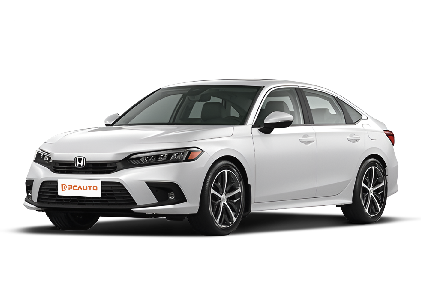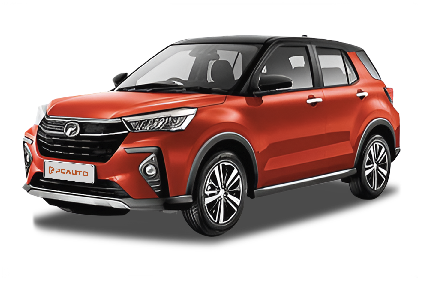Q
how to remove water stains on car
In Malaysia, those watermarks on your car's paintwork are usually caused by limescale or mineral deposits, especially if you don't dry the car thoroughly after washing or use hard water. To get rid of them, start by gently wiping with a neutral car shampoo and a soft cloth. If that doesn't work too well, try diluted white vinegar or a dedicated water spot remover – spray it on, let it sit for a few minutes, then rinse off. Just avoid using abrasive tools or strong acid/alkaline cleaners, as they can damage the paint. Also, regular waxing or coating will add a protective layer to reduce watermarks sticking. If the marks have already seeped into the clear coat, you might need professional polishing. It's best to dry your car right after washing, and try to use soft water or add a water spot preventer – these tips will really help cut down on watermarks. For really stubborn stains, checking with a professional car detailing shop is the safer bet; they can give you a tailored solution based on your paint's condition.
Special Disclaimer: This content is published by users and does not represent the views or position of PCauto.
Popular Models
Related Q&A
Q
What gas is used as fuel?
There are various types of gases used as fuels, commonly including natural gas (primarily composed of methane), liquefied petroleum gas (LPG, mainly containing propane and butane), hydrogen, coal gas (a mixture of carbon monoxide and hydrogen), and biogas. These gaseous fuels are considered clean energy sources due to their complete combustion and low emission pollution. In the automotive sector, the primary gaseous fuels used are compressed natural gas (CNG), liquefied natural gas (LNG), and liquefied petroleum gas (LPG). LNG is produced by cooling natural gas to -161.5°C for liquefaction and storage, offering high energy density and being suitable for long-haul commercial vehicles. CNG is natural gas stored in a compressed gaseous state, with refueling stations being relatively widespread, making it commonly used in taxis and urban buses. LPG, a byproduct of petroleum refining, is easily liquefied and stored, and is also utilized in certain light-duty vehicles. The use of these gaseous fuels contributes to reduced vehicle emissions and extended engine lifespan, garnering significant attention in the context of energy scarcity.
Q
What is E85 fuel?
E85 fuel is a type of flex-fuel, mainly composed of a mixture of ethanol and gasoline, with the ethanol content reaching up to 85% and gasoline accounting for 15%. In practical applications, the proportion of ethanol may fluctuate between 51% and 83% due to factors such as geographical location and season. It is suitable for flexible fuel vehicles (FFVs), whose electronic management systems can automatically adjust operating parameters according to the actual proportion of fuel in the tank to ensure that vehicle performance is not affected. As a fuel type related to renewable energy, E85 plays a transitional role in the energy transition process. It can not only reduce dependence on traditional fossil fuels but also adapt to some existing transportation infrastructure, providing a flexible option for the transition from traditional fuels to cleaner energy sources.
Q
How many types of fuel for cars?
In the local area, the main types of fuel commonly used for cars are two kinds of unleaded gasoline: RON95 and RON97. RON95 is the most popular and economical choice, with an affordable price and wide availability. It can meet the daily driving needs of most ordinary models (such as the 2019 Kia Cerato and 2020 Volkswagen Passat). It complies with the MS228 national fuel standard, and the cleaning additives it contains can effectively maintain the cleanliness of the fuel injection system and combustion chamber. RON97 has a higher octane rating, making it suitable for high-performance models or use under high-load conditions. It optimizes the engine's anti-knock performance, and occasional use can also deliver smoother power output, but its cost is significantly higher than RON95. All local gasoline must meet EURO 4M or higher standards, eliminating the need for additional fuel additives. Furthermore, due to the floating fuel price mechanism, the prices of both gasoline types fluctuate with market conditions, allowing car owners to select the appropriate fuel based on vehicle requirements and usage needs.
Q
Is rpm the same as horsepower?
RPM (Revolutions Per Minute) and horsepower are not the same concept. RPM refers to the number of rotations an engine makes per minute and is a unit for measuring engine speed; horsepower (HP), on the other hand, is a unit of power for measuring an engine's work capacity. The two are closely related. The calculation of horsepower requires combining torque and RPM, for example, using the formula: horsepower = torque × RPM ÷ 5252 (imperial conversion) or ÷ 9549 (metric conversion). Higher RPM generally enables an engine to produce more horsepower, but the actual output also depends on parameters such as torque, and the engine's horsepower performance varies across different RPM ranges.
Q
What is the rpm of a 0.5 hp motor?
The rotation speed of a 0.5 hp motor is not a fixed value; it depends on the motor type, number of pole pairs, and application scenario. In AC asynchronous motors commonly used in Malaysia, the rotation speed is closely related to the power supply frequency and the number of pole pairs. Malaysia's power supply frequency is 50 Hz, and the synchronous speed is calculated by the formula n = 60f/p (where f is the frequency and p is the number of pole pairs). For example, the synchronous speed of a 2-pole asynchronous motor is 3000 rpm, and the actual operating speed is slightly lower due to the slip, approximately 2800-2900 rpm; the synchronous speed of a 4-pole motor is 1500 rpm, with an actual speed of about 1400-1450 rpm; and a 6-pole motor has a synchronous speed of 1000 rpm, with an actual speed of around 950-980 rpm. In the Malaysian market, 0.5 hp motors are widely used in small household water pumps, fans, or small industrial equipment. Different brands (including local brands and models sold in Malaysia by international brands) offer products with different numbers of pole pairs according to requirements. Users need to choose based on the application: for high-speed requirements (such as some ventilation fans), 2-pole motors can be selected; for medium-speed and high-torque requirements (such as small water supply pumps), 4-pole motors are suitable; and for low-speed and high-torque scenarios, 6-pole motors can be chosen. When purchasing, users can confirm whether the rated speed marked on the motor nameplate matches the specific usage requirements.
Q
How to calculate rpm of motor?
The calculation method of motor speed varies depending on the type of motor. For synchronous motors, their speed is directly related to the power supply frequency and the number of pole pairs, with the calculation formula being n = (60×f)/p, where n represents the speed (in rpm, i.e., revolutions per minute), f is the power supply frequency (in Hz), and p is the number of pole pairs of the motor (the number of pole pairs is equal to the number of poles divided by 2). The actual speed of an asynchronous motor is lower than the synchronous speed, so the slip ratio needs to be introduced for calculation, with the formula n = (60×f/p)×(1 - s), where s is the slip ratio (usually expressed as a decimal, generally between 0.01 and 0.05 at full load). The speed calculation formula for a DC motor is n = (U - Iₐ×Rₐ)/(Cₑ×Φ), where U is the armature voltage, Iₐ is the armature current, Rₐ is the armature circuit resistance, Cₑ is the motor constant, and Φ is the flux per pole. For example, if the power supply frequency is 50 Hz and the number of pole pairs is 2, the speed of the synchronous motor is 60×50÷2 = 1500 rpm; if it is an asynchronous motor with a slip ratio of 0.03, the actual speed is 1500×(1 - 0.03) = 1455 rpm. Mastering these calculation formulas helps to understand the working principle of motors, evaluate their performance and energy consumption, thereby selecting and applying motors more reasonably.
Q
Is RPM related to HP?
RPM (revolutions per minute) and HP (horsepower) are directly linked because horsepower is calculated using torque and engine speed. The formula is HP = (Torque × RPM) ÷ 5252, meaning at the same torque level, higher RPM results in greater horsepower.
Engine performance curves typically show how horsepower and torque change across the RPM range. Naturally aspirated engines usually hit peak horsepower at higher RPMs, while turbocharged engines often deliver max horsepower at lower RPMs—thanks to forced induction improving low-end torque.
Understanding this helps when choosing or modifying a car. If you enjoy high-revving driving, a naturally aspirated engine might be your pick. But if you prioritize low-RPM grunt for daily driving, turbocharged models are better suited.
Also, transmission gear ratios play a role in how well the engine stays in its optimal RPM range, balancing power delivery and fuel efficiency. Getting the ratios right means better throttle response and mileage.
Q
What is the RPM of 10 hp?
The RPM range of a 10-horsepower engine depends on its type and application. For instance, a single-cylinder diesel engine in small generators or farm equipment might run between 1,800 and 3,600 RPM, while a high-revving motorcycle engine could exceed 8,000 RPM.
The relationship between power and RPM is determined by torque, calculated as: **Horsepower = Torque (Nm) × RPM ÷ 5,252**. This means a low-RPM engine needs higher torque to achieve the same power output, whereas a high-RPM engine produces less torque.
In everyday cars, idle speeds typically sit at 700–900 RPM, with full-throttle operation reaching over 6,000 RPM—though those engines are far more powerful than 10 hp. For small equipment, RPM selection balances efficiency and durability. Pumps or lawnmowers often use fixed-speed designs for better fuel economy, while construction gear may adjust RPM to match load demands.
For exact specs, always check the engine’s nameplate or manual—factors like air/liquid cooling or two-/four-stroke design significantly impact performance.
Q
What is the maximum hp of a car?
The current production car horsepower record is held by elite hypercar brands. Take the Bugatti Chiron Super Sport 300+ – its monstrous 8.0-liter W16 quad-turbo engine churns out 1,600 horsepower. Then there's the Koenigsegg Jesko Absolut, whose 5.0-liter V8 twin-turbo pushes 1,623 ponies when running on E85 biofuel. These extreme machines use every trick in the book: featherlight carbon fiber bodies, cutting-edge aerodynamics, and multi-turbo systems to chase those insane numbers.
But let's be real – horsepower isn't everything. Torque, drivetrain efficiency, weight, and chassis tuning matter just as much. For daily driving? A modest 200-300 hp in your average family sedan is plenty. Even performance cars in the 400-600 hp range will satisfy most speed cravings.
What's interesting is how hybrid tech is changing the game. Many modern performance cars now use electric motors to boost power while keeping efficiency somewhat reasonable. My advice? Match the horsepower to your actual needs – no point paying at the pump for power you'll never use.
Q
Can a car have 800 horsepower?
Sure thing. Right now, there are quite a few high-performance cars on the market pushing 800 horsepower or even more. These beasts usually fall into the supercar or heavily modified performance car category—think flagship models from top-tier brands or professionally tuned builds. They achieve that insane power through massive engines, turbocharging, or hybrid systems.
An 800-horsepower car is brutally quick, often hitting 0-100 km/h in under 3 seconds, but it also demands serious skill to handle, not to mention upgraded cooling and braking systems. Keep in mind, though, that this much power isn’t exactly practical for daily driving—it’s more at home on a track or special occasions. Local factors like fuel quality, road conditions, and legal restrictions also come into play.
If you’re into high-performance machines, follow expert auto media or test-drive events to experience them firsthand. Just remember to pick a car that actually suits your needs—not just the numbers on paper.
Popular Cars
Model Year
Car Compare
Car Photo
Latest Q&A
Q
Why is gasoline a fuel?
Gasoline can serve as a fuel because it possesses core properties suitable for providing power and the ability to convert energy. It is a hydrocarbon mixture obtained through fractional distillation and cracking of petroleum, mainly containing C5-C12 aliphatic hydrocarbons, naphthenes, and a small amount of aromatic hydrocarbons. It is characterized by volatility and flammability, with low viscosity facilitating smooth flow in injection systems, and rapid evaporation enabling quick formation of a uniform combustible mixture with air. Gasoline stores chemical energy; when ignited by a spark plug in the engine combustion chamber, it burns rapidly to release a large amount of thermal energy, which pushes the piston to move and converts into mechanical energy, providing power for vehicles such as cars and motorcycles. In addition, the anti-knock property of gasoline (measured by octane number) can adapt to engines with different compression ratios, ensuring stable operation and performance; it has a high energy density, storing more energy per unit volume, good combustion efficiency, and high availability of gas stations for convenient use. Therefore, it has become the main fuel for spark-ignition internal combustion engines and is widely used in transportation and related fields.
Q
What are 1st, 2nd, and 3rd family gases?
The first, second, and third family cars are vehicle categories classified based on the stages of family car-purchasing needs. The first family car is an entry-level economical model, such as the Perodua Axia and Proton Saga, priced at approximately 30,000 to 50,000 Malaysian ringgit. It emphasizes fuel efficiency and practicality, making it suitable for young families purchasing a car for the first time. The second family car falls into the mid-range category, offering more space and enhanced features, such as the Proton Persona and Toyota Vios, priced between 60,000 and 100,000 Malaysian ringgit, catering to the comfort requirements of growing families. The third family car is a premium model or an MPV/SUV, such as the Proton Exora and Honda CR-V, priced above 100,000 Malaysian ringgit. It boasts spacious interiors and upscale configurations, ideal for larger families or long-distance travel. Malaysian consumers typically prioritize fuel efficiency, maintenance costs, and space when selecting a vehicle. Families at different life stages adjust their car choices accordingly. For instance, small families may begin with the first category, upgrade to the second after having children, and larger families often opt for the third category.
Q
What are the four types of natural gas?
Natural gas can be classified into four main types based on its source: gas field gas (pure natural gas), associated petroleum gas, condensate field gas, and coalbed methane. Gas field gas is directly extracted from gas wells, typically containing over 90% methane with minimal impurities. Associated petroleum gas is a byproduct of oil extraction, containing not only methane but also significant amounts of other hydrocarbons such as ethane and propane. Condensate field gas yields light hydrocarbon fractions during extraction, characterized by a high methane content and small quantities of heavier hydrocarbons like pentane. Coalbed methane is extracted from underground coal seams, primarily consisting of methane and nitrogen, and must have a methane content exceeding 40% to be utilized as fuel. Due to compositional differences, these natural gas types vary in calorific value and applications. The first three are commonly used for urban gas supply, whereas coalbed methane requires purification before effective utilization. As a clean and efficient energy source, the development and utilization of these diverse natural gas types play a crucial role in optimizing energy structure.
Q
What are the three types of fuel gas?
Common fuel gases are mainly divided into three types: natural gas, liquefied petroleum gas (LPG), and manufactured gas. Natural gas is a flammable gas existing in nature, with methane as its main component. It is colorless and odorless, leaves no residue after combustion, and has high thermal efficiency, making it a clean energy source. Liquefied petroleum gas is a by-product of the petroleum refining process, whose main components include propane and butane. It is a gas at room temperature but can be converted into liquid through pressurization and cooling, facilitating storage and transportation. Manufactured gas is generated through thermochemical reactions of fossil fuels such as coal or petroleum under specific conditions, with main components including hydrogen, carbon monoxide, and methane. It has low production costs but produces certain pollution after combustion, so ventilation should be ensured during use. These three fuel gases have different application scenarios in the energy supply field, and their calorific values and usage characteristics also vary. For example, the calorific value of natural gas is approximately 33,000-36,000 kcal per cubic meter, that of LPG is about 90,000 kcal per kilogram, and that of manufactured gas is roughly 3,500-4,200 kcal per cubic meter. The different calorific values make them suitable for different energy demand scenarios such as households and industries.
Q
Is unleaded petrol a gas?
Unleaded gasoline is not a gas but a liquid fuel. It refers to gasoline with a lead content of less than 0.013 grams per liter and without the addition of tetraethyl lead as an anti-knock additive during the refining process. Its octane rating is typically 95, slightly lower than the 97 of leaded gasoline. The use of unleaded gasoline can effectively reduce emissions of harmful substances such as hydrocarbons, carbon monoxide, and nitrogen oxides in vehicle exhaust, thereby lowering pollution risks including smog, toxic gases, and acid rain. However, it should be noted that while unleaded gasoline contains no artificially added lead, it still retains trace amounts of lead from crude oil. Additionally, its combustion releases gases, particulate matter, and condensates, with particles smaller than 2 microns in diameter being particularly prone to prolonged suspension in the air and subsequent human inhalation. Thus, potential health impacts remain a concern. Currently, most vehicles can use unleaded gasoline directly, though certain models require selecting the appropriate octane grade as recommended by the manufacturer to ensure optimal engine performance and longevity.
View MoreLatest News

The era of Jaguar fuel-powered cars has ended: the last F-PACE SVR has rolled off the production line, marking a full transition to electrification.
MichaelDec 26, 2025

Perodua Ativa Hybrid may be launched, a fuel-efficient small car that doesn't require charging
MichaelDec 26, 2025

Lexus releases RZ 600e F SPORT Performance, 0–100 km/h acceleration takes only 4.4 seconds
JamesDec 26, 2025

2026 Honda Jazz minor facelift exposed in the Chinese market, featuring a new front-end design
RobertDec 25, 2025

Tesla applies for a new technology patent that can reduce the occurrence of Phantom Braking
Kevin WongDec 25, 2025
View More




 Cars
Cars














